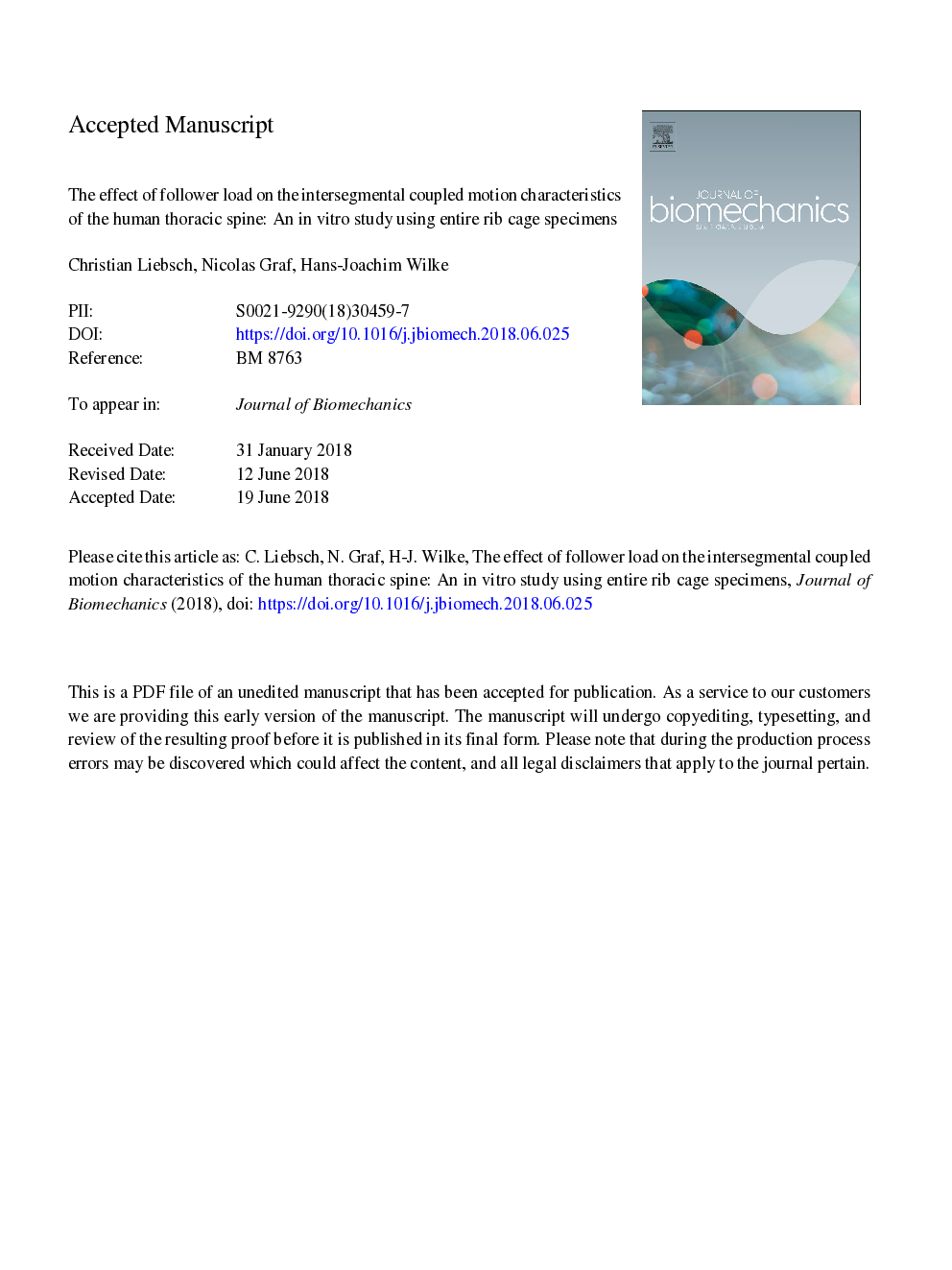| Article ID | Journal | Published Year | Pages | File Type |
|---|---|---|---|---|
| 8960647 | Journal of Biomechanics | 2018 | 33 Pages |
Abstract
The mechanical coupling behaviour of the thoracic spine is still not fully understood. For the validation of numerical models of the thoracic spine, however, the coupled motions within the single spinal segments are of importance to achieve high model accuracy. In the present study, eight fresh frozen human thoracic spinal specimens (C7-L1, mean age 54â¯Â±â¯6â¯years) including the intact rib cage were loaded with pure bending moments of 5â¯Nm in flexion/extension (FE), lateral bending (LB), and axial rotation (AR) with and without a follower load of 400â¯N. During loading, the relative motions of each vertebra were monitored. Follower load decreased the overall ROM (T1-T12) significantly (pâ¯<â¯0.01) in all primary motion directions (extension: â46%, left LB: â72%, right LB: â72%, left AR: â26%, right AR: â26%) except flexion (â36%). Substantial coupled motion was found in lateral bending with ipsilateral axial rotation, which increased after a follower load was applied, leading to a dominant axial rotation during primary lateral bending, while all other coupled motions in the different motion directions were reduced under follower load. On the monosegmental level, the follower load especially reduced the ROM of the upper thoracic spine from T1-T2 to T4-T5 in all motion directions and the ROM of the lower thoracic spine from T9-T10 to T11-T12 in primary lateral bending. The facet joints, intervertebral disc morphologies, and the sagittal curvature presumably affect the thoracic spinal coupled motions depending on axial compressive preloading. Using these results, the validation of numerical models can be performed more accurately.
Related Topics
Physical Sciences and Engineering
Engineering
Biomedical Engineering
Authors
Christian Liebsch, Nicolas Graf, Hans-Joachim Wilke,
